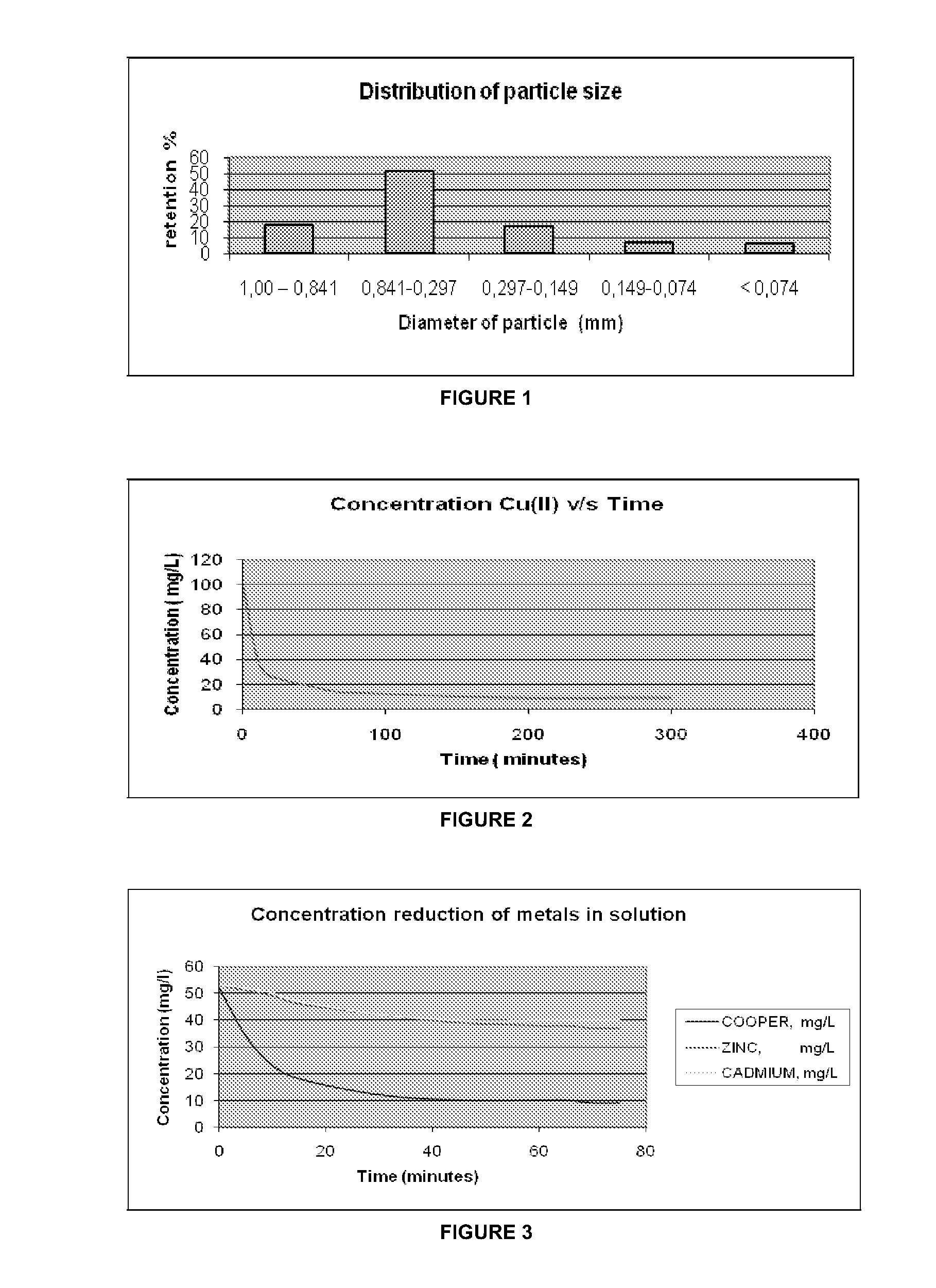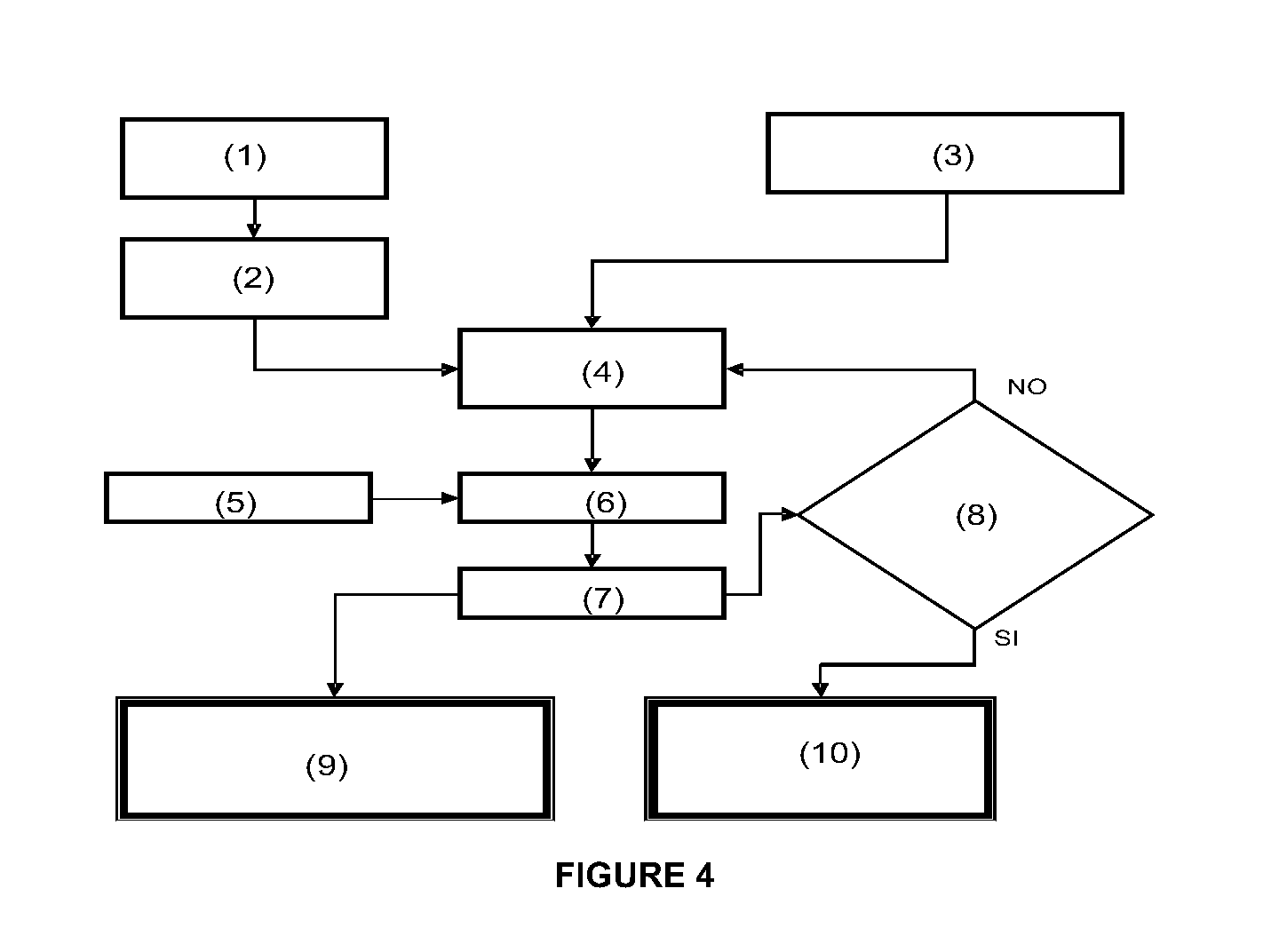Method To Remove Toxic Heavy Metals
a heavy metal and toxic technology, applied in the direction of water/sewage treatment by ion exchange, ion exchangers, separation processes, etc., can solve the problems of increasing the treatment cost of contaminated waters and involving additional costs
- Summary
- Abstract
- Description
- Claims
- Application Information
AI Technical Summary
Benefits of technology
Problems solved by technology
Method used
Image
Examples
application examples
Example 1
[0034]One liter of an aqueous solution of copper sulphates (II) of 100 mg Cu(II) concentration / liter was treated with 10 grams of radiata pine bark, 10% moisture, and a grading distribution below 1 mm of diameter. FIG. 1 shows the corresponding histogram. The suspension was mechanically stirred at 800 rpm keeping pH at a value of 5.5. FIG. 2 shows the adsorption kinetics from which it can be derived that after 1 h and 20 minutes the metal concentration in the aqueous phase was reduced by 87%. The experience was conducted at 19° C. The chemical analyses were performed by atomic absorption spectrophotometry.
example 2
[0035]Ten liters of an aqueous solution of copper nitrate (II) of 50 mg Cu(II) concentration / liter, zinc sulphate (II) at 50 mg concentration Zn(II) / liter and cadmium nitrate (II) at 50 mg concentration Cd(II) / liter, were treated with 100 grams of radiata pine bark, 10% moisture, and a grading distribution below 1 mm of diameter. FIG. 1 shows the histogram corresponding to the distribution of particle size of the lignocellulosic material used. The suspension was mechanically stirred at 700 rpm keeping pH at a value of 5.5. FIG. 3 shows the adsorption kinetics for Cu, Zn and Cd. The experience was conducted at 13° C. The chemical analyses were performed by atomic absorption spectrophotometry.
PUM
| Property | Measurement | Unit |
|---|---|---|
| size | aaaaa | aaaaa |
| Reynolds number | aaaaa | aaaaa |
| time | aaaaa | aaaaa |
Abstract
Description
Claims
Application Information
 Login to View More
Login to View More - R&D
- Intellectual Property
- Life Sciences
- Materials
- Tech Scout
- Unparalleled Data Quality
- Higher Quality Content
- 60% Fewer Hallucinations
Browse by: Latest US Patents, China's latest patents, Technical Efficacy Thesaurus, Application Domain, Technology Topic, Popular Technical Reports.
© 2025 PatSnap. All rights reserved.Legal|Privacy policy|Modern Slavery Act Transparency Statement|Sitemap|About US| Contact US: help@patsnap.com


